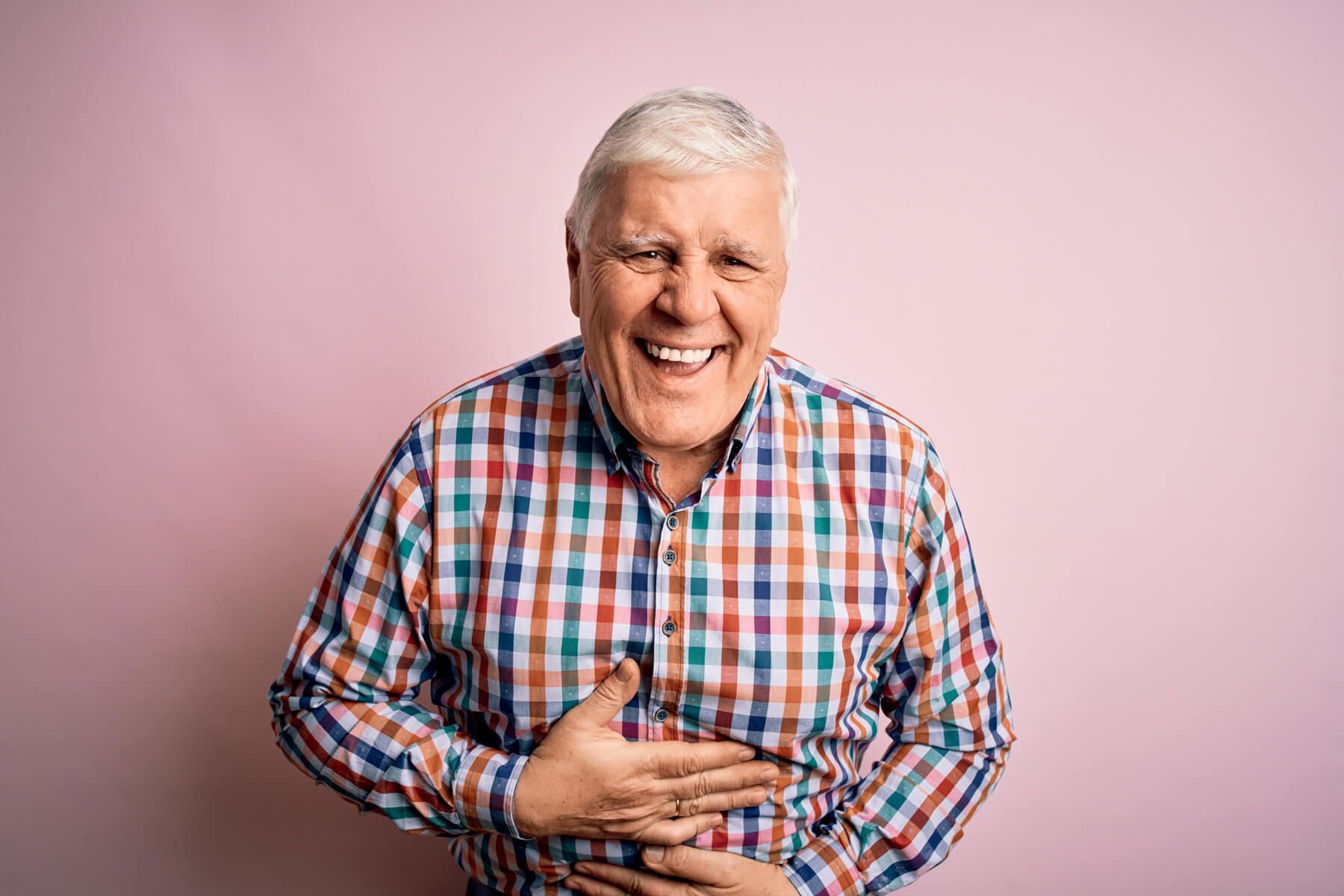
Laughter Yoga for Speech Pathologists: breathing, voice and therapy benefits
When you think about the work of a speech pathologist (SP), does laughter as an exercise come to mind? More likely, it’s images of speech drills, language games, or swallow assessments.
As Speech Pathology Week begins (24-30 August), I thought it timely to put forward Laughter Yoga’s potential place in the toolkit of speech professionals—not as a replacement for therapy, but as a playful, evidence-informed companion.
What is Laughter Yoga?
Laughter Yoga is a unique practice that combines playful laughter exercises with deep yogic breathing (pranayama) and gentle movement.
The laughter at first is ‘fake’ (we prefer the term ‘intentional’ or ‘simulated’ as we start with the sound and body actions of laughter, rather than reacting to something funny) and that’s absolutely okay because research shows that even simulated laughter can trigger physiological and psychological benefits similar to spontaneous laughter.
Why should speech pathologists care?
Speech pathologists work with communication, voice, and swallowing, all of which depend on breath, vocal fold function, and muscular coordination. Laughter Yoga naturally engages these same systems while also boosting mood, building rapport, and reducing tension.
Admittedly, there’s no body of research showing Laughter Yoga specifically improves speech and language outcomes: perhaps that’s someone’s PhD topic waiting to be explored? However, there is evidence in related areas important to SP practice:
- Respiratory function and breath control
- Vocal efficiency and projection
- Psychosocial engagement and motivation.
Let’s unpack the science.
Breathing for better voice and speech
We can’t speak without breath. We can’t laugh without breath either.
For people with voice disorders, neurological conditions, or respiratory challenges, learning to manage breath is often a key therapy goal.
Broader research on breathing-focused yoga for chronic obstructive pulmonary disease (COPD) has found improvements in lung function and exercise tolerance.
Since Laughter Yoga incorporates deep inhalations and prolonged exhalations, it may offer similar respiratory training benefits in a fun, low-pressure way.
Finding the voice through laughter
Laughter is a whole-body vocal act. It can be loud or soft, high or low, breathy or resonant.
Each laugh recruits the respiratory system, the larynx (voice box), and the articulators (lips, tongue, jaw)—all areas SPs often target in voice therapy.
Think about the chant we do in Laughter Yoga: a “ho-ho-ho” laugh encourages abdominal engagement and forward resonance while a “ha-ha-ha” laugh can loosen a tight jaw.
While I couldn’t find any randomised control trials published about Laughter Yoga alone improving voice disorders, I know of voice professionals integrating yoga principles into therapy.
Read this article about Vocal Yoga: applying yoga principles in voice therapy.
Psychosocial benefits
In the hundreds of laughter sessions I’ve personally delivered, I’ve witnessed energy change. Mood has lifted, worries are allayed, and loneliness abates. I’ve seen it; I’ve heard it from participants. And research such as this meta-analysis on the impact in reducing depression symptoms confirms it, again and again.
Why does this matter for speech pathology?
Because therapy is more than mechanics and therapy doesn’t happen in a vacuum. A person’s mood, motivation, and connection with the therapist all influence outcomes—and their overall life satisfaction.
Is there an SP who would not want these three outcomes below for their clients?
- Better engagement—clients who are more relaxed and positive may be more willing to participate and take risks in therapy.
- Social connection—group laughter sessions (as a social prescription) can reduce social isolation.
- Enjoyment—therapy that feels good is therapy people stick with.

How SPs could integrate Laughter Yoga
Think of Laughter Yoga as a primer—a way to prepare the body and mind for the work ahead.
Much like athletes warm up before competition, clients can warm up their respiratory and vocal systems with laughter before moving into structured therapy.
With a caveat of safety—Laughter Yoga does involve active breathwork and gentle movement, and care needs to be taken as for any exercise—here are a few ways speech pathologists, trained in basic Laughter Yoga, could add this element to clients’ therapy plans.
- Use laughter patterns to practise controlled inhalation and exhalation for clients with breath–speech coordination challenges.
- Try playful “ha-ha-ha” or “he-he-he” sequences to reduce tension in jaw, lips, or tongue before speech drills.
- Use short laughter breaks in longer therapy sessions to reset energy and focus.
- In communication groups (for example for Parkinson’s or aphasia), use Laughter Yoga as a group ice-breaker to boost energy and connection.
The last word

While research doesn’t prove that Laughter Yoga alone will make someone’s speech clearer or their voice stronger, it does show potential benefits for breathing, mood, and social connection—all of which support the conditions in which good therapy can thrive.
For speech pathologists, Laughter Yoga is a low-tech enjoyable option to add variety and vitality to sessions.
Socially prescribing a client to attend a laughter club where Laughter Yoga is practised in a group makes it low-cost too, as laughter clubs are free or small change.
In the end, that’s something we can all smile about. And as I say, often, a smile is a laugh that is waiting to burst…
Author HeatherJoy Campbell is Global Ambassador for Laughter Yoga International in Australia. A former medical writer, she’s the leading professional laughter yoga facilitator and trainer in Queensland. She also runs two laughter clubs in her own community.